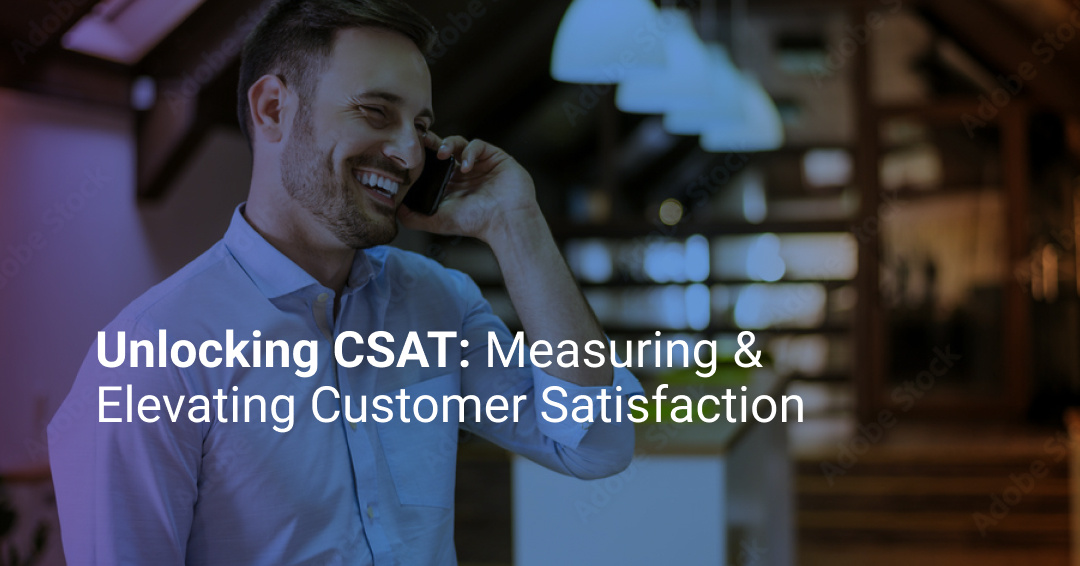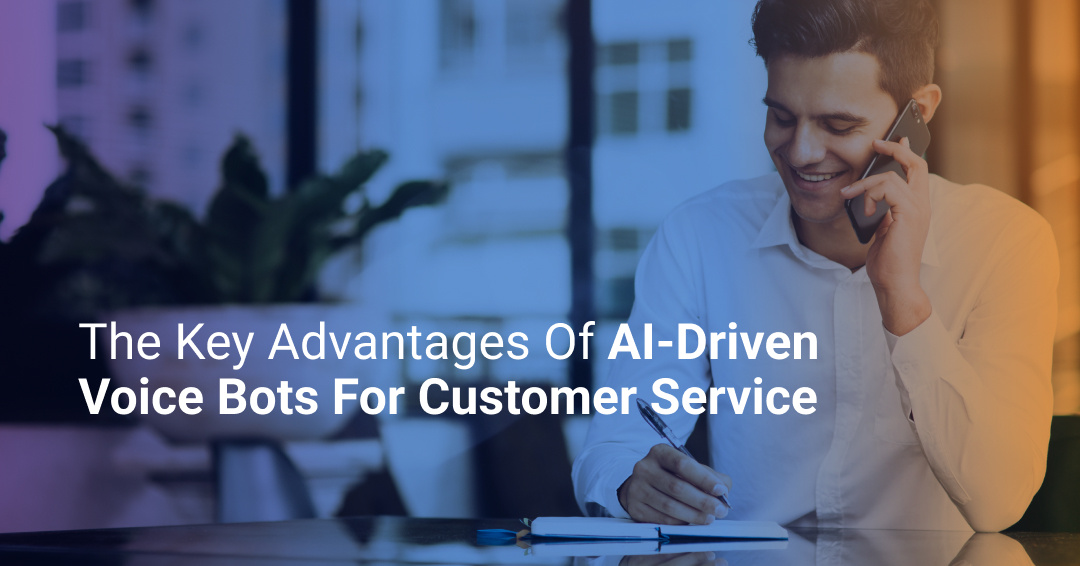What's CSAT Score? How to Measure and Improve It
Businesses across industries have changed or evolved over the decades, but one thing that has remained the same is that their growth is pretty much...
8 min read
![]() Mosaicx
:
June 25, 2024
Mosaicx
:
June 25, 2024

Working at a contact center is no joke. You get back-to-back calls during peak hours, repetitive conversations, short-tempered clients, tons of “hold times” and unhappy customers, and high-quality standards you must meet.
Automation in call centers is the antidote to balance this work environment.
Using technology to program repetitive tasks within a contact center automatically helps your teams and customers. With automation, customer representatives can focus on handling complex problems, improving customer experience metrics by solving issues faster, and nurturing positive long-term loyalty perceptions.
This guide will discuss the different ways to use contact center automation software, its benefits, and its characteristics.
Contact center automation is improving this work environment using AI, machine learning technologies, and basic automation that can handle repetitive tasks to help customers solve issues without human intervention. While some areas and aspects can be automated in a call center, the most common way to incorporate automation is to include chatbots, interactive voice response (IVR) systems, and intelligent virtual agents (IVAs) to handle simple tasks. Doing so helps agents have a more manageable workload and the ability to focus on solving more meaningful problems.
Adapting automation helps contact centers improve efficiency, provide a much more streamlined and effective customer experience, and even map and predict potential conversations to help reps handle conversations better. It’s a way for agents to feel empowered, for your customers to feel heard, and for your brand to be remembered in a good light.
There are multiple ways to implement automation to improve contact center operations. Below are the most common scenarios to consider when finding a software automation solution.
IVRs are the classic telephony systems that help contact centers improve their interactions with callers. They use pre-recorded possible customer journeys and incorporate touch-tone and/or speech recognition to help call centers automate multiple processes, such as call routing and capturing primary data.
While they can massively help operations, IVR systems can be pretty limited. Without a thorough understanding of potential user journeys, they can lead to a frustrating experience for your customers, who may have to repeat themselves or call multiple times to try to solve their problems.
An omnichannel contact center allows teams to handle high volumes of communications through multiple synced channels. These touch points can be phone, SMS, website chatbots, and multiple others that are integrated with an automated omnichannel platform to help organizations better understand their customers.
By skipping the manual work that would map out users’ experiences into a single journey, representatives can have more information and solve problems faster. Likewise, when it comes to data hygiene and information needs, an omnichannel contact center saves a lot of time that would go into logging information without omnichannel software.
These software bots can help their human counterparts with tedious and repetitive managerial tasks. For example, with this process automation, reps can automatically update customer information, access their entire event history and interactions, and be better informed to help customers.
Usually, these are automation integrated with databases and CRMs, but they can also help with security, identity verification processes, and reporting, among other repetitive tasks.
This automated system helps contact centers connect customers' calls to agents. It's a relatively simple automation that maps busy signals, voicemails, and disconnected numbers and also works as a filter to ensure customer representatives speak with real people instead of spam bots. By using algorithms, these dialers can predict agents' availability based on their performance, adjusting dialing rates to optimal levels.
Call centers use this automation to increase efficiency and productivity by reducing dialing and waiting times.
Among the considerations around predictive dialers are both compliance and call quality. Predictive dialers must meet regulations to prevent issues such as abandoned calls or contacting people on do-not-call lists. Call quality also matters because a miscalculation in this process can lead to agents being unable to take connected calls, ultimately hurting the business's reputation and service.
Sending emails can be time-consuming. Automating emails and email sequences based on behavioral signals allows customer representatives to save time and be more efficient at their jobs. They can also help nurture relationships without individually sending emails but rather triggering an email sequence that helps customers reach a particular goal.
Automating workflows is another way automation can make a massive difference for contact centers. From data entry tasks to follow-ups and relationship management, automating workflows helps businesses improve their operations and consistency. At the same time, having more attention and capacity to focus on more complex tasks, customer representatives can work more efficiently, ultimately leading to better customer outcomes.

Automation is a way for contact centers to get more done. Instead of wasting precious time from your workforce on tasks a machine can do, you can automate repetitive processes, help your team work better, get more done, and reduce costs and potential resignations.
The most important reason automation makes a difference is that it ultimately improves your customers' experience. Even the most experienced customer representatives may forget something, but with automation processes in place, things happen without any additional effort, helping customers feel like the service they received was more effective.
At the same time, beyond customer satisfaction due to automation, your most talented reps get to focus and solve more challenging problems, reducing churn rates and improving your brand perceptions. Plus, it's much more intellectually stimulating to work on solving issues requiring analytical thinking rather than repetitive tasks where automation is non-existent.
Another key benefit of automation is the possibility of tending to most customer requests at any time. Like most industries, contact centers have a work schedule that may not be ideal for your customers. An automated system that can help them solve problems by themselves whenever they can reach out is a perfect solution that saves you time, improves your customer service experience, and reduces strain on your workforce.
By default, automating processes means changing a system that requires repetitive work for another one that triggers a set of instructions without any additional effort. By being more efficient in your call center processes, you can save time and money, helping your customer rep teams better serve your customers.
Instead of having to train your teams on a myriad of procedures and potential scenarios, with automation, you can solve many requests without any human intervention. Not only is there the financial benefit, but also the psychological lift for your teams, having to work on tasks that require a more creative and analytic approach.
Contact center employees generally have a regular work schedule. Depending on the type of business and the time-sensitive nature of the service, multiple shifts might be assigned to a particular client or campaign to ensure there’s always someone available to take your call. Regardless of the type of campaign, however, having automated processes to help your reps can ultimately impact the speed and quality of your problem-resolution efforts.
Helping customers solve their problems by themselves is a massive opportunity for any contact center. It allows your teams to work efficiently on more complex conversations, improve your problem resolution rates, and skip the dependency on always having someone on call.
Note: While this varies across industries, automation generally improves responsiveness and enhances customer service.
Information is the first step to building a more insightful and data-driven customer service culture. Beyond having access to it, building processes and automation helps businesses move the needle, improve customer interactions, and find opportunities to beat their competitors.
Before choosing the right type of automation software for your contact center, it is vital to remember that certain qualities are essential for contact centers. Below is a list of the most important features you should consider.
Some competitors in the market have a vast array of features that seem great but are incompatible with your current systems. While this may not seem like a hurdle, IT teams usually have to go through a heavy integration process to ensure whichever platform you use runs in your current infrastructure. This procedure can be seamless, with an automation partner team helping them integrate processes such as Mosaicx, or it can be a struggle that increases technical debt and adds stress to their workload.
Remember that integration is step 1, but keeping the partnership running takes time and effort. Some competitors do not include customer service coverage in your contract but instead charge you more to help you integrate and maintain your partnership. Others, such as Mosaicx, provide an end-to-end solution with multiple technology experts who focus on genuinely solving your problems and helping you make the most of the partnership.
Another aspect to consider when choosing automation software is how easy or difficult it is for average users. Some integrations and processes may not be as intuitive for your teams, so it is vital to ensure they can add value to your teams and look and feel helpful and intuitive.
Not everyone using automation tools can be a technical expert. But that should not stop you from helping your teams automate some busy work that can affect their experience working at a contact center with multiple repetitive tasks.
As we mentioned earlier, having data makes sense for organizations that can actually use it to improve their operations. A great automation provider can help you access the right information to make better decisions, understand your team's skills, and measure and improve your performance.
With Mosaicx360, you can measure end-to-end interactions from dial to disconnect and across media. This includes time on hold, self-service interactions, transfers to a live agent, and third-party services. You may also listen to calls from the customer's perspective and get the data needed for confident decision-making.
In other words, finding a partner that uses analytics and reporting to help you improve your operations matters just as much as the idea of automation itself.
Customers have more channels to contact customer support than most companies consider. On top of that, they want the person taking their call or the conversational AI to help them understand their context and journey without having to explain their request every time. To do that, you need to be able to handle multiple customer service channels that are connected and synchronized in real-time.
Mosaicx is the only conversational AI provider that supports phone and text service with end-to-end analytics, industry-leading voice features, and a success coach to help organizations provide support based on user journeys. Not having to repeat yourself when your call gets transferred is a great way to improve your NPS scores, and best of all, it can help your customer support teams be more informed about every customer to focus on problem-solving activities.
Great automation partners can customize their solutions to your unique contact center needs. Partnering with a provider with the capacity and expertise to adapt its offer to your operational needs is an integral part of the selection process.
For example, you may want particular alerts based on actions or trends. You may also want to optimize customer communications based on specific segments, problems, or channels. With a robust solution such as Mosaicx and a success coach helping you every step of the way, you can better adapt your automation integrations to match your capabilities and customer needs.
The best conversational AI solutions have natural language processing (NLP) and machine learning (ML) capabilities to help your contact center consistently provide excellent customer service. The better these two aspects are, the better your customer experience can be.
N.L.P. refers to the ability of a conversational AI to understand the context of a conversation and provide natural and personalized suggestions and solutions to the end user. This means that people could talk to the machine as they would with a human agent. ML, on the other hand, refers to the ability of the system to learn and iterate to continuously improve, just like a human counterpart would learn from solving problems to improve their service down the line.
As mentioned, not all automated systems built for contact centers have the same level of support, training, and accompaniment to ensure success. With higher-end providers like Mosaicx, you can access end-to-end support, resources, and permanent training.
Ultimately, what matters most is ensuring your automation processes work for your call center and streamline your operations today and in the future.
For over three decades, we have delivered exceptional CX solutions to enterprise-level contractors, helping them achieve unprecedented growth and impact the world.
With Mosaicx, your contact center automation needs are fully covered.
End-to-End Dashboards: Insights360 tracks calls through transfers, collecting data throughout the call, including your IVR, queues, contact center, and partner sites. Measure effectiveness at every stage of the journey from dial to hang up.
Customer Care Channel Analysis: Capture the engagement experience, including all automated, agent-assisted, and outsourced segments. Optimize the performance of human and virtual agents to reduce call volume and costs per call.
Voice-of-the-Customer Listening: Get insight into why people call and how each step affects overall CX. Hear directly from customers what they think to gain first-hand knowledge about your services, products, and competitors without the limiting voice features of our competitors.
Ready to transform engagement with conversational AI? Chat with one of our solution specialists and see how the right combination of AI, advanced technology, and human expertise can help your organization succeed.

Businesses across industries have changed or evolved over the decades, but one thing that has remained the same is that their growth is pretty much...

Customers have several major expectations from modern businesses, but none is as challenging as them reading your mind to anticipate support you...

The classical understanding of customer service is being significantly changed as more and more businesses shift toward artificial intelligence (AI)...